Maintenance of Walnut Orchards
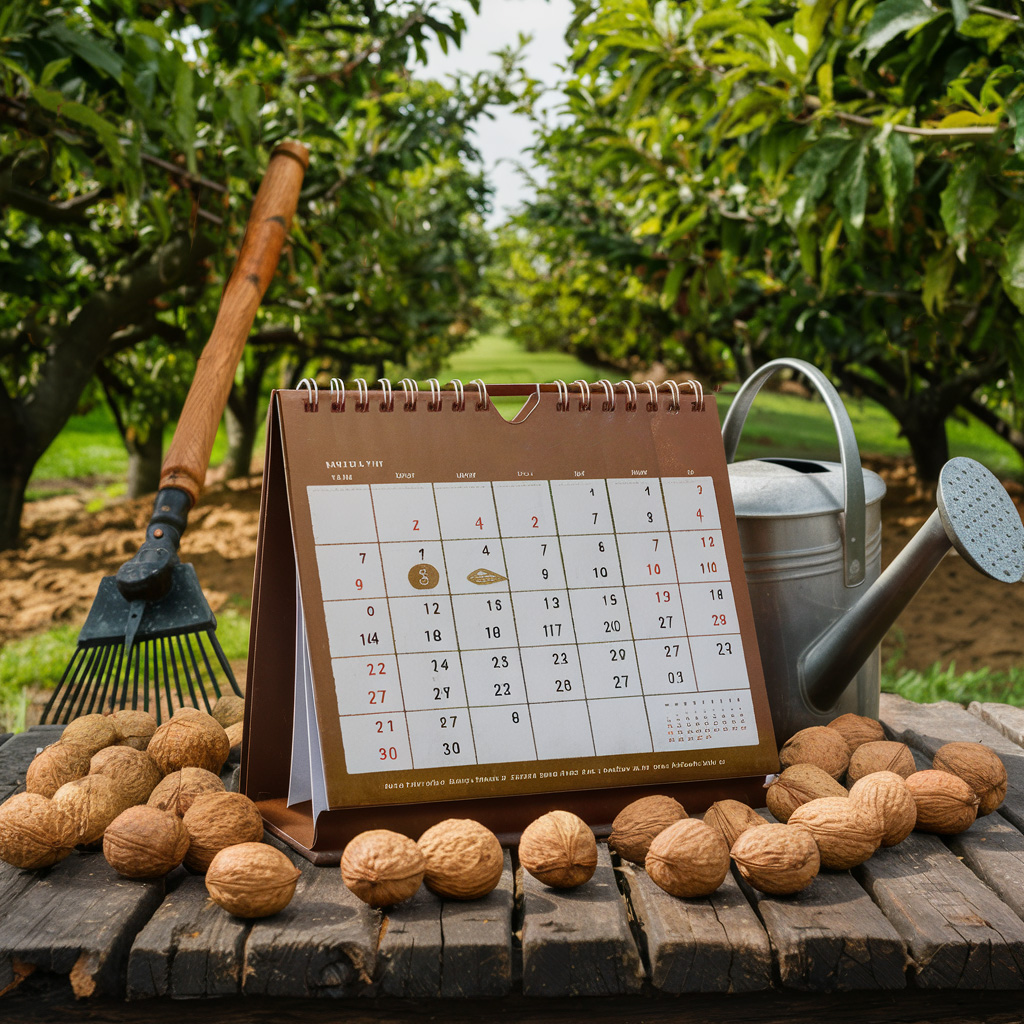
In our monthly walnut tree care guide, we cover all the essentials to maximize the yield of your walnut orchard. Discover essential tips from irrigation, fertilization and weed control to harvest strategies to optimize tree health and productivity.
Monthly Operations
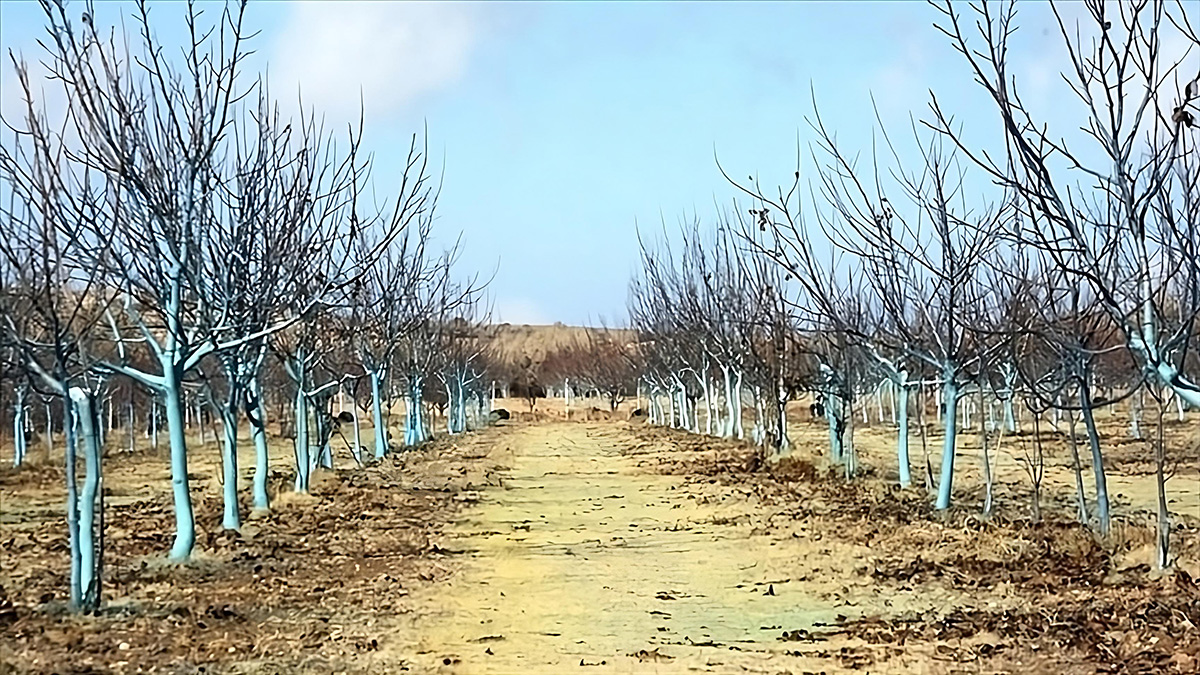
March
Weeds: Apply herbicides that prevent weeds from growing.
Fungicides: As walnut trees start their growth period in the spring, they should be treated with fungicides to protect them from potential diseases. We recommend bordeaux mixture. It is a very effective fungicide against a wide range of fungal diseases.
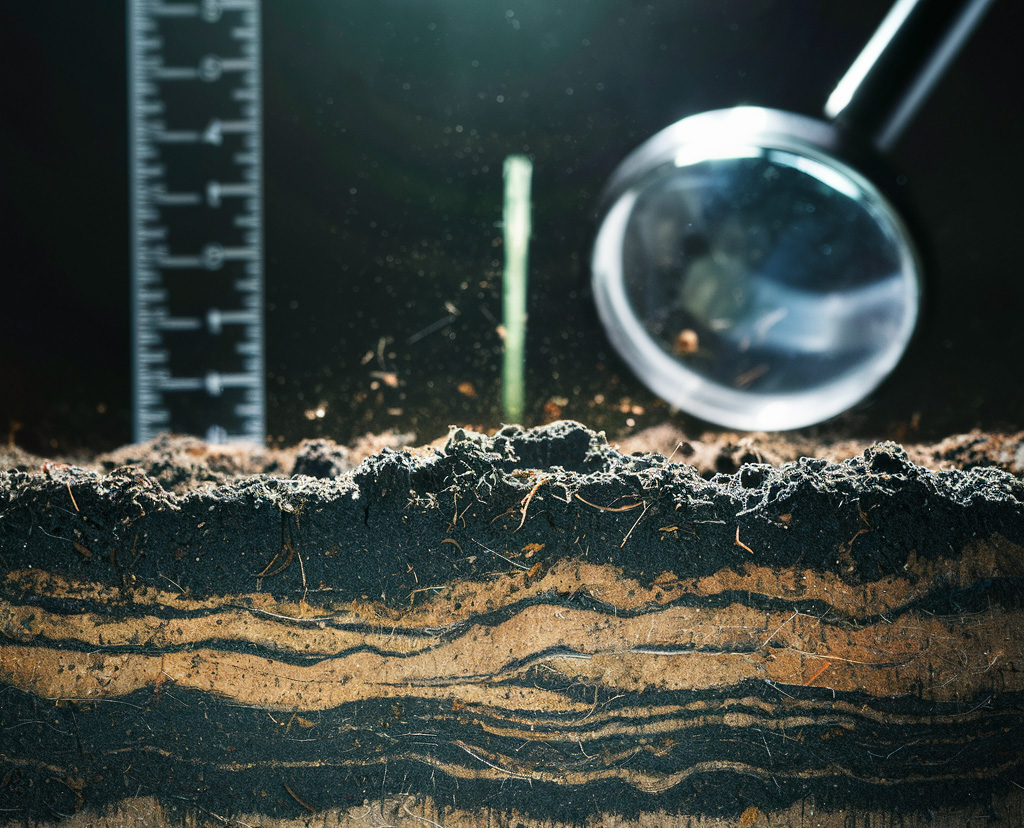
April
Insects: Hang sticky traps or pheromone traps prevent insects such as codling moths. By using these traps, you can detect them early and take prevent them from laying eggs and causing harm to the walnuts.
Soil tests: For mature trees it is a good practice to conduct soil tests in April. This timing allows you to understand the soil nutrient levels after the winter and before the growing season starts. The results of the tests guide us on how much fertilizers will need to be applied.
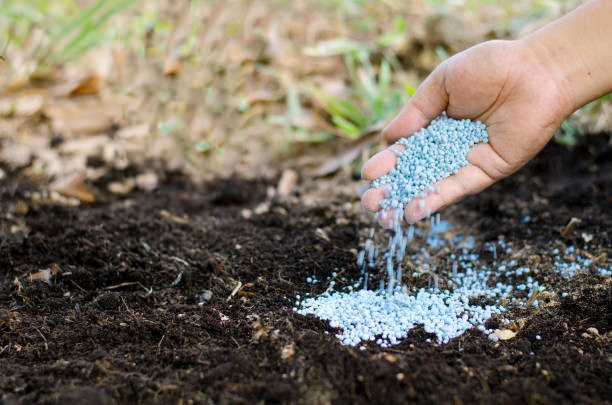
May
Irrigation: Ensure that your irrigation system is working to prepare for summer. If May is still rainy, you don’t need to start irrigation yet. Only if May is warm and dry, then you can start irrigation
Nitrogen: Start applying nitrogen fertilizers in May. Walnut trees only use stored nitrogen the first month after leafing. If you apply N before May it will not be used by trees and rain will take it away. You will continue applying Nitrogen 3 more times, in the same amounts, until mid August. Quantity of nitrogen fertilizer will be decided based on soil tests, leaf analysis, and the specific needs of the trees. Our team at Waltree Nursery help you in understanding your soil test results and give you free consultation as our after-sales service.
Weeds & Pest Management: According to the weed and pests species you identified in your orchard, obtain necessary products from your local agriculture market and start applying when the weather gets warm.
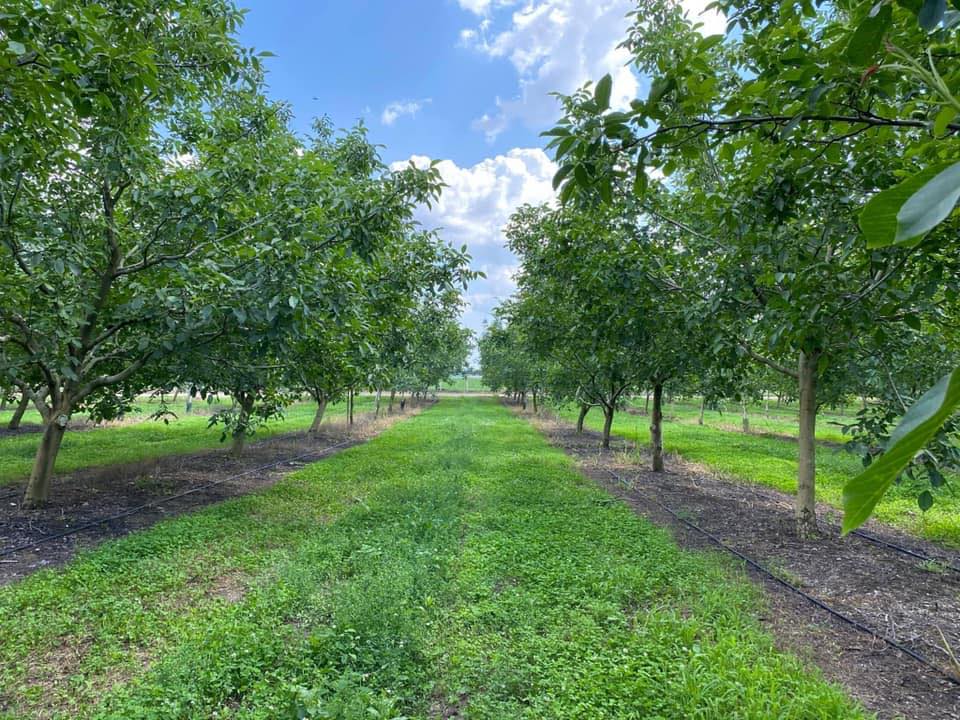
June
Irrigation: Start irrigation if haven’t started already in May.
Insecticides: Continue monitoring for insects such as aphids, caterpillars, and beetles and apply insecticide sprays
Nitrogen: Apply one more dose of nitrogen fertilizer.
Potassium and Phosphorus Fertilizers: Apply potassium and phosphorus fertilizers if needed based on your soil and leaf tests
July
Pruning & Disease Management: Trim away dead or dying branches to prevent infections. If your orchard has had issues with certain diseases, consider spraying. It is important to keep in mind that summer pruning should be done primarily for removing dead or diseased wood. Don’t do major pruning to shape the trees in this month
Irrigation: Continue irrigation. Control the amount of water to ensure good quality nuts. Adjust irrigation based on the needs of the trees to avoid stress.
Nitrogen: Apply one more dose of nitrogen fertilizer.
Insecticides: This is a very important time for monitoring and controlling pests. Apply insecticides to prevent walnut husk flies or codling moths if they are present and causing damage.
August
Mold: Take steps throughout the growing season to reduce the risk of mold at harvest. Consider local humidity and rainfall patterns in your mold prevention strategies. While mold infections usually occur at hull split, steps can be taken throughout the growing season to reduce mold at harvest.
Nitrogen: You should finish applying nitrogen in mid August. Walnuts don’t use much Nitrogen after leaf fall. Giving Nitrogen late in the season is a waste of money and doesn’t benefit the trees.
Irrigation: Continue irrigation. Control the amount of water to ensure good quality nuts. Adjust irrigation based on the needs of the trees to avoid stress.
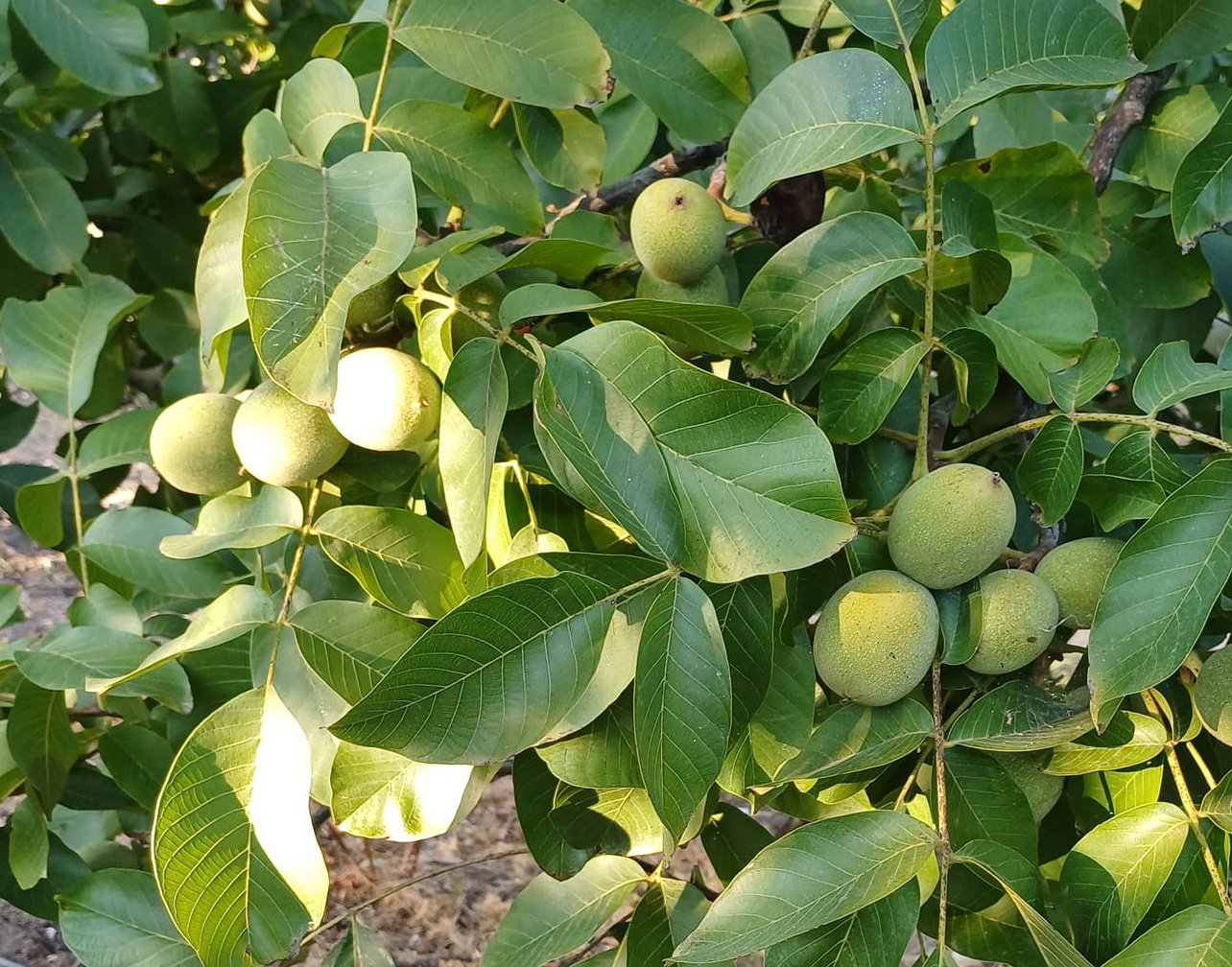
September
Irrigation: Stop irrigation in middle of September. This is necessary for the trees to go into its resting phase for the winter. If there is no rain for a long time, you can consider irrigation by small amounts until middle of October.
Pruning: Prune dead or diseased branches to prevent infections. It is easiest to tell dead, diseased from healthy wood when there are still leaves on the tree, rather than during dormant season. Additionally, make sure you do pruning while there is no rain forecast in the coming days. Pruning when the weather is dry will help avoid infection of fresh pruning wounds.
Harvest: Harvest your walnuts timely to maintain their quality. Assess your pest management strategies after harvest and consider planting cover crops for soil health. Timely harvest is important for nut quality. Delaying harvest can darken the thin, brownish skin that covers the kernel of the walnut. Walnut color quality decreases most rapidly in the first nine hours, so try to pick up the same day that nuts are shaken.
October
Post-Harvest Management: As soon as harvest is over, remove any leaves, branches and nuts from the ground as they can be home insects, bacteria and fungi. Apply appropriate fungicides and pesticides to control post-harvest diseases and pests.
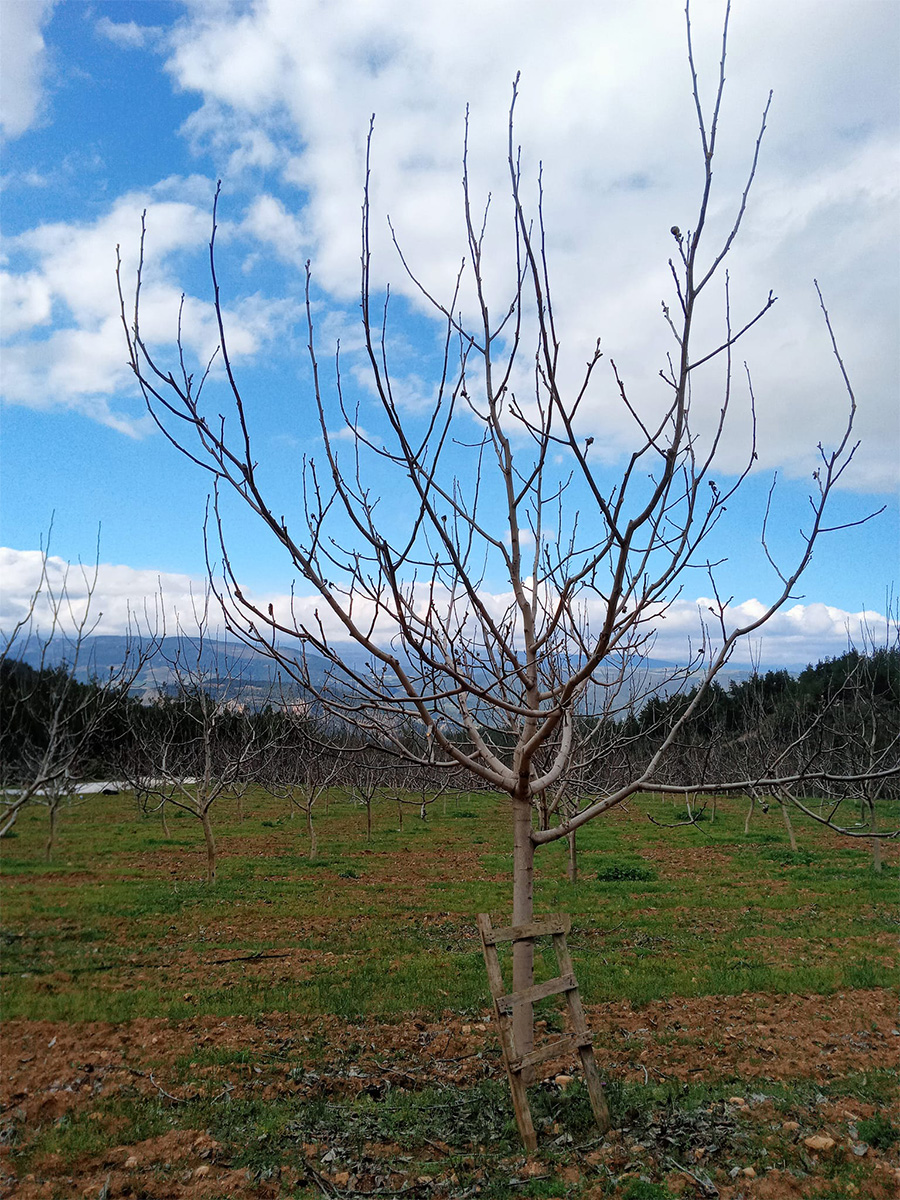
November
Phosporus and Potassium fertilizers: Apply potassium and phosphorus fertilizers if needed based on your soil and leaf tests.
Cover Crops: Cover crops are special plants that we grow among the trees or in the spaces between rows. We plant them to make the soil better for walnut trees. They do this by adding more organic material and nutrients to the soil. This makes a better living space for walnut trees, helping them grow better and produce more nuts. Some examples are wheats, beans, clover and alfalfa. Plant cover crops before the leaves fall for best growth.
Weed Management: Continue controlling weeds based on recommendations specific for the autumn season.
WALNUT TREE PRICES
Fill out a quick form and we can send you a price list in 24 hours.